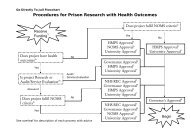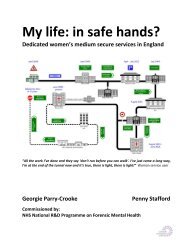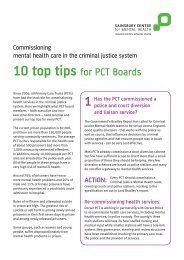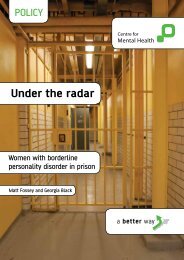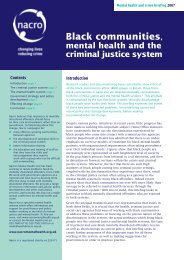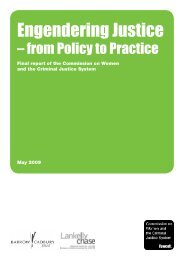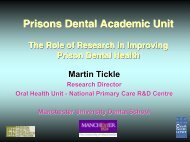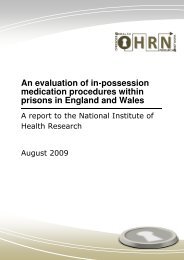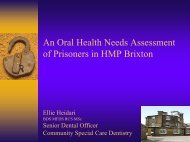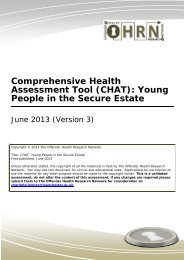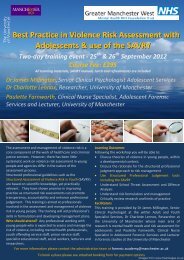Physical Control in Care Training Manual - Independent Advisory ...
Physical Control in Care Training Manual - Independent Advisory ...
Physical Control in Care Training Manual - Independent Advisory ...
Create successful ePaper yourself
Turn your PDF publications into a flip-book with our unique Google optimized e-Paper software.
PHYSICAL CONTROL IN CAREEpilepsyEpilepsy 14 is a medical condition <strong>in</strong>volv<strong>in</strong>g abnormal activity of thebra<strong>in</strong> which results <strong>in</strong> a ‘seizure.’ In some <strong>in</strong>stances seizures will<strong>in</strong>volve loss of consciousness, fall<strong>in</strong>g to the floor, and tens<strong>in</strong>g of thewhole body followed by rhythmical twitch<strong>in</strong>g of the muscles (‘tonicclonicseizure’). Other young people may experience seizures <strong>in</strong>which they appear absent and unresponsive without full loss ofconsciousness (‘absence’). There are also seizures <strong>in</strong>volv<strong>in</strong>g onlypart of the bra<strong>in</strong> (‘partial seizures’) which may cause unusualexperiences (for example see<strong>in</strong>g or hear<strong>in</strong>g th<strong>in</strong>gs) and behaviourdependent on the part of the bra<strong>in</strong> affected.Epilepsy is a common disorder (1 <strong>in</strong> 130 people) and is NOT normallyassociated with violence. However the follow<strong>in</strong>g po<strong>in</strong>ts are relevant <strong>in</strong>the context of safe management young people:• If a young person discloses epilepsy, medical care and accessto prescribed medication are essential. Seizures (and otherserious reactions) may occur if anti-epileptic medication issuddenly stopped.• A person recover<strong>in</strong>g from an epileptic seizure may be confusedand this should not be mistaken for wilful failure to respond to<strong>in</strong>structions. A young person may be resistive to <strong>in</strong>terventionsdur<strong>in</strong>g this period if they do not understand what is happen<strong>in</strong>g.It is usually helpful to wait until full responsiveness returns (if noimmediate risk is apparent).• A young person experienc<strong>in</strong>g an ‘absence’ type seizure maysuperficially appear to be conscious and able to respond.However, this is not the case and it is important not to mistakethe seizure for a wilful failure to respond to <strong>in</strong>structions.• There are comparatively rare reports of people engag<strong>in</strong>g <strong>in</strong>potentially harmful actions whilst experienc<strong>in</strong>g an ‘absence’ or‘partial’ type seizure. Where possible allow the young personspace to act without com<strong>in</strong>g to harm. Move anyone who may beat risk out of the area. However, careful restra<strong>in</strong>t might beneeded if the young person puts them self at risk.• A variety of issues may trigger a seizure. The young personmay be aware of the triggers which are relevant to themselves.14 National Society for Epilepsy (2008) About Epilepsy. http://www.epilepsysociety.org.uk© National Offender Management Service National Tactical Response GroupJuly 201040



